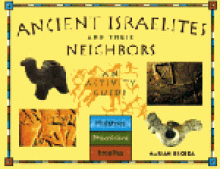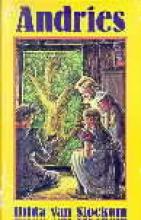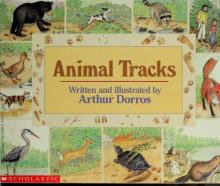No name
An Invitation to Joy
This beautiful coffee-table book is filled with full-color photos of the Pope and quotes from his writings and talks organized into the following chapters: The Human Family: Youth, Family, Love, Women, Work and Rest; The People of God: Mary, Vocation, Saints, Prayer, Forgiveness, Death and Eternal Life, Other Christians Other Religions, Laypeople; The Dignity of the Human Person: For Life, Human Rights, Solidarity, Freedom, Peace and War, Suffering and Evil with a brief biographical portion entitled "A Lifetime of Devotion". Each chapter and subchapter have a brief commentary by Greg Burke, TIME Magazine's Rome Correspondent, who overviews the Pope's and the Church's teachings on these basic areas of life. The commentaries are quite good and outline teachings on topics such as abortion, divorce, ecumenism and the role of lay people in the Church. Although the commentaries and quotes touch upon difficult topics such as human sexuality and drug abuse, they are handled in a sufficiently thoughtful fashion for me to consider them appropriate for high school or adult reading.
To a certain extent, the book is aimed at those outside the Church who may benefit from the Pope's message and so the text explains concepts like what the Rosary is and basic Catholic teaching on devotion to Mary in a very simple way. To me the book offered a fascinating concept to consider - that the Pope is presenting himself as the authentic spiritual leader of the whole world and presents the basic teachings of Christ in a way unheard of in the past. In these beautiful images of the Pope and his flock can be seen two aspects of the face of Christ. First, Christ as the Good Shepherd who cares for all of his flock - even the least and farthest away. Second, the face of Christ as he taught us in the Gospels to see in the poor and suffering - the least of his brethren. The short biographical portion contains numerous photos of Karol Wojtyla in his childhood, early adult life and his years as a young priest, bishop and cardinal.
Ancient Israelites and Their Neighbors: An Activity Guide
The uncluttered pages with line drawings and black-and-white photographs focus on daily life rather than on wars, military leaders, and historically significant events. There are no review questions, suggested writing or research topics, or test materials. However, there are descriptions of the history and geography, architecture, clothing, writing, work, food, and religion of each of the three groups discussed. Also included are very simple maps, a brief summary, a timeline, and a bibliography for further reading.
The book contains long textual passages of several pages, interwoven with activity and project directions. The fairly-involved projects include sewing and adorning costumes, the building of models and ships, dye-making, and cooking. Measurements and recipes are given in standard American unit measures and in metric. These are not simple projects that my own young children could complete on their own; parental supervision and participation is definitely required. In spite of the effort needed, the projects are creative and memorable; completing a select few of them would appeal to even the most history-resistant student.
I noted, however, a few problems from the perspective of a Catholic homeschooling family. First, the majority of the history of the Israelites is derived from the Bible, but I found it difficult to reconcile the author's opinion that only parts of the Bible are reliable. A particular translation of the Bible is not referenced in the lengthy bibliography. The author notes that archeology can help to show that Biblical events really occurred, but she says that anything in the Bible about God, miracles or spiritual matters cannot be proven because that is a matter of faith. In addition, although the Bible is used as a historical reference, secular dating conventions (BCE rather than BC, and CE rather than AD) are used, adding another element of confusion. As with all secular materials, the author presents an equality amongst all religions, ancient and modern.
Secondly, there are several mentions made of child sacrifices in both the Israelite and Phoenician cultures. I think that this is unnecessary in a book intended for elementary students. The author writes (on page 44) that the Bible even mentions some Israelites sacrificing children to other gods. We know that this is meant to describe unacceptable sacrifices, but the text could be very confusing to young children.
Another confusing statement is this from page 126: "One of the greatest legacies of the Philistines was their effect on the Israelites. We might not even have the Bible. Even if we did have a Bible, it would not be the same Bible we have today."
It is difficult to find materials for younger children when studying this geographical area and time period of history. Because of that, I can recommend this book, with the qualification that the teaching parent is aware of its shortcomings. It may be best to use this book as an enrichment to a textbook or Biblical-based historical unit study rather than as the primary source of information.
This title was donated for review by Chicago Review Press
And Then What Happened, Paul Revere?
Andries
Angel in the Waters
Inspirational! Impressive! Instructional!
This picture book has a beautiful pro-life lesson for the very youngest among us to the oldest. It tells the story of a baby from conception through birth and into infancy without any details that will require further explanation to our little ones. Told in the first person, the text is brief and easy to read but contains far more depth than most picture books. Simple yet engaging artwork, with peaceful colors and a dreamlike quality, compliments the text. Even my 4-year-old noticed that at the baby's birth, the page backgrounds changed from dark to bright white; while I don't think that he recognizes the symbolism yet, it certainly captured his attention.
Without directly teaching, the author skillfully reminds us that life begins in the womb, with baby aware of sounds and light and warmth. The baby's guardian angel, depicted as a star rather than the traditional winged creature, is more spiritual than physical and accompanies baby from conception onward. The angel is intelligent and gentle while guiding and reassuring baby, hinting at eternal life beyond this earthly one.
My single regret is that this book is only available in a softcover binding. Destined to become a classic, it should be available bound in a durable hardcover.
Additional Comments: My children fell in love with this book the minute they saw it. Down to my toddler they were enchanted with the beautiful, realistic illustrations and the simple, charming text. My seven year old loves how easy it is to read - she returns to it over and over again. I love the beautiful implicit message about the sanctity and fragility of life.- A.V.H. (2-23-05)
Angels in Iron
Prata brings this fascinating tale to life by giving the characters real personalities. They are not mere pawns used to further the plot of the story. Interesting subplots abound. Will the feuding Florentines, Di Corso and Rambaldi, succeed in killing one another before the enemy has a chance or will the grace of God intervene?
Because of a few "choice" words, very minor sexual references (nothing coarse or inappropriate), and extreme violence at times (bodies are getting hacked to pieces), this novel would be more appropriate for a mature high school student than younger children. While the violence is definitely graphic at times, especially in the heat of battle ("The decapitated body stumbled down the hill, neck spewing blood...") since war is hell, it is most realistically portrayed.
Why read a story of such blood and gore? The overwhelming theme is courage, honor, and the Catholic faith. The knights know what the loss of this island will mean. They are willing to die for their faith. There are also many touching moments regarding their Faith. Even though they are in the midst of war, the knights celebrate the feast of Corpus Christi. A conversation tairkes place between a squire from Germany who wants to take up arms in defense of the Faith and a knight from Italy who advises, "All in good time, little brother. Youth must learn that service is more than death. We must strive to live for The Word before we can die for it."
This book is a real page-turner: Will the knights be able to hold on to the forts in the midst of wave after wave of bombardments and attacks? What really happened at the siege in Malta? Who is going to win the battle of wits and psychological stamina? And ultimately, will the knights be able to fearlessly defend Catholic Europe from the invasion of the scourge of Islam? Read Angels in Iron to find out.
Angus and the Ducks
Various editions available
Animal Tracks
One of the things that fascinates me most about Wisconsin winters (I grew up in California) are the animal tracks clearly visible in the snow. It leaves a temporary record of what was visiting while you weren't looking – what a fascinating thing for homeschoolers to look into. Animal Tracks will make a nice resource for younger students to study local wildlife. This is an illustrated narrative of animal life with a little guessing game on each page based on the tracks left by each animal. The book also contains four pages of identified tracks (including humans) and instructions for "preserving" the tracks with plaster of paris or by tracing. An excellent way to spark children's interest in nature.
Animals of God - Three Catholic stories for children
This audio cassette tells the stories of three different animals who played roles in the lives of the Saints. They are told from the animals' point of view and are appropriate for small children. Similar to other Regina Martyrum audio dramas, they are performed with a full cast of voices and appropriate music and sound effects. I especially like the first story which helps to explain the Catholic belief about the Eucharist and the story of a miracle and a conversion involving St. Anthony of Padua and a donkey named Joshua.






